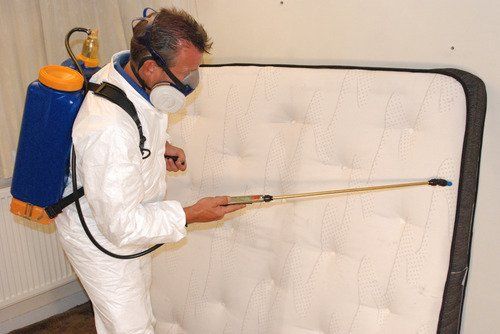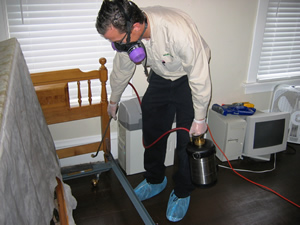How to Identify Bed Bug Bites and Prevent Future Infestations
How to Identify Bed Bug Bites and Prevent Future Infestations
Blog Article
Get Educated Concerning the Types of Bug Control Approaches and Their Benefits for Property Owners
Recognizing the various bug control approaches available to property owners is crucial for effective insect monitoring. From chemical and organic approaches to cultural and mechanical methods, each approach offers distinct benefits that can dramatically impact both health and environmental security. House owners that are educated can make critical choices that not only address pest issues but also improve the general high quality of their living atmosphere. As we check out these techniques additionally, it ends up being clear that the decision-making procedure includes greater than simply instant results; it touches on long-lasting sustainability and health. What variables should affect these essential choices?
Chemical Insect Control Methods
Chemical insect control approaches are an essential element of integrated pest administration techniques for homeowners looking for efficient solutions to pest problems. These techniques involve the application of chemical materials created to get rid of or deter parasites that endanger personal residential or commercial property, wellness, and comfort. Usual chemicals utilized include pesticides, herbicides, rodenticides, and fungicides, each customized to target particular parasites.
The main benefit of chemical insect control is its quick effectiveness; lots of formulations provide instant results, reducing pest populaces considerably in a brief time. Furthermore, advancements in chemical formulas have actually resulted in items that are extra eco-friendly and have reduced toxicity levels for non-target organisms when used properly.

Biological Pest Control Strategies
Natural pest control approaches have acquired prominence as homeowners look for safer and more lasting alternatives to typical chemical techniques. Biological parasite control strategies use all-natural killers, parasites, or virus to manage parasite populations effectively. This approach is not only ecologically pleasant however also lessens the risk of injury to non-target types, consisting of helpful insects and wild animals.
Among the most typical biological control techniques involves introducing all-natural predators right into the environment. Ladybugs can be utilized to regulate aphid populations, while nematodes target soil-dwelling bugs like grubs. Additionally, parasitoids-- organisms that survive or within a host-- can be employed to manage certain insect species by laying eggs inside them, eventually bring about their demise.
One more technique is using biopesticides, which are stemmed from natural materials such as minerals, germs, or plants (bed bug exterminator). These items can properly target pests while positioning marginal risk to people and family pets. Overall, biological insect control methods supply home owners with an effective ways of bug monitoring that straightens with eco-friendly concepts, advertising a much healthier living setting while reducing reliance on synthetic chemicals
Mechanical Pest Control Methods
Mechanical pest control approaches include a selection of approaches that literally stop or get rid of bugs without making use of chemicals. These methods are especially helpful for home owners looking for bed bug treatment ecologically friendly options while ensuring the safety of their home.
One usual approach is making use of obstacles, such as displays, traps, and nets, which protect against bugs from going into homes or specific areas. As an example, mounting window displays can properly maintain insects out, while using physical barriers around yards can deter bigger pests like rabbits or deer. In addition, mechanical catches designed for rodents can record and remove these bugs without the demand for hazardous compounds.
An additional efficient technique includes using brooms and vacuum cleaners to eliminate pests straight from surfaces. Regular cleaning and upkeep can dramatically reduce bug populations by removing food sources and concealing areas. Furthermore, using tools like ultrasonic parasite repellents can prevent numerous insects through acoustic wave that are undesirable to them however faint to people.
Social Pest Control Practices
Cultural parasite control practices published here concentrate on customizing the atmosphere and management methods to develop conditions that are much less for pest problems. These techniques are essential in maintaining a balanced environment and minimizing the dependence on chemical treatments. By modifying agricultural practices, homeowners can effectively prevent insects while advertising plant wellness.
One typical approach consists of crop rotation, which interrupts the life process of insects by transforming the types of plants grown in a specific area (bed bug exterminator). This not only decreases pest populations but also enhances dirt health. In addition, intercropping-- growing diverse plants in distance-- can confuse pests and lower their capacity to find their recommended host plants
Water administration is an additional critical element of cultural practices. Proper irrigation techniques can protect against standing water, which functions as a reproduction ground for insects and other insects. Furthermore, keeping cleanliness in and around the home, such as routinely getting rid of debris and food waste, can dramatically lower pest attraction.
Incorporating these social practices right into a detailed pest monitoring technique allows house owners to develop an atmosphere that naturally discourages pests, thus improving the performance of other control techniques while advertising lasting horticulture and landscape design.

Integrated Pest Management Approaches
Integrated Parasite Management (IPM) represents an all natural technique that incorporates different approaches to properly take care of pest populaces while minimizing environmental influence. This approach incorporates organic, social, physical, and chemical methods to attain sustainable insect control. By analyzing pest populaces and their natural opponents, IPM highlights monitoring and identifying insects before implementing control measures.
One of the core principles of IPM is the usage of limits, which establish the level of pest activity that calls for intervention. This makes sure that therapies are used only when required, lowering the reliance on chemical pesticides. Organic control approaches, such as presenting all-natural killers or parasites, job in combination with cultural methods like crop rotation and environment adjustment to disrupt pest life process.
In addition, IPM encourages the use of least-toxic chemical reference alternatives when intervention is essential, prioritizing items that present very little danger to non-target microorganisms and the setting. For home owners, embracing IPM comes close to not just improves the effectiveness of parasite management but also promotes a much healthier living environment, promoting biodiversity and lowering chemical direct exposure. Inevitably, IPM encourages house owners to make educated decisions that balance bug control with ecological duty.
Verdict
In conclusion, comprehending the different parasite control techniques equips home owners to make enlightened decisions concerning pest management. Each strategy-- chemical, biological, mechanical, cultural, and incorporated parasite monitoring-- uses distinctive benefits that cater to various needs and choices.
Recognizing the numerous pest control methods readily available to property owners is essential for reliable insect monitoring.Chemical bug control techniques are an important part of incorporated pest administration strategies for home owners seeking reliable services to pest problems. Overall, biological insect control strategies supply home owners with an efficient means of insect administration that aligns with ecological concepts, promoting a much healthier living atmosphere while lowering dependence on synthetic chemicals.
Social parasite control methods focus on customizing the atmosphere and monitoring methods to develop problems that are much less helpful to pest problems.In conclusion, understanding the numerous parasite control approaches empowers home owners to make informed choices concerning pest management.
Report this page